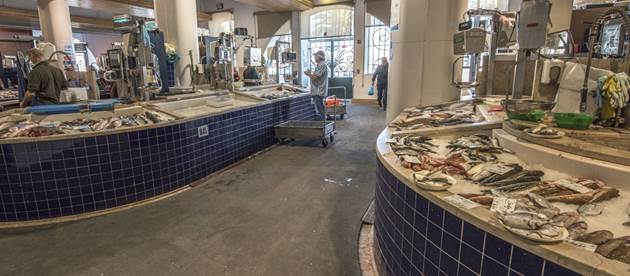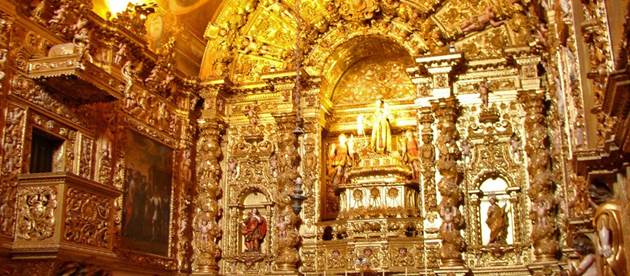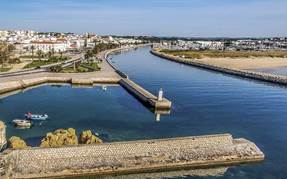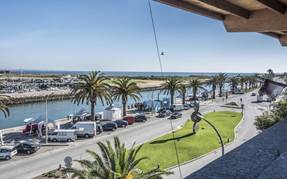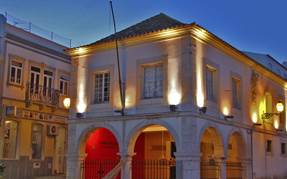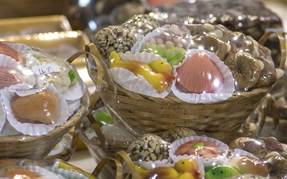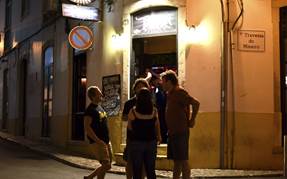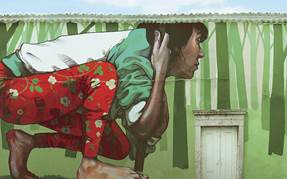LAGOS - TEN THINGS YOU NEED TO DO
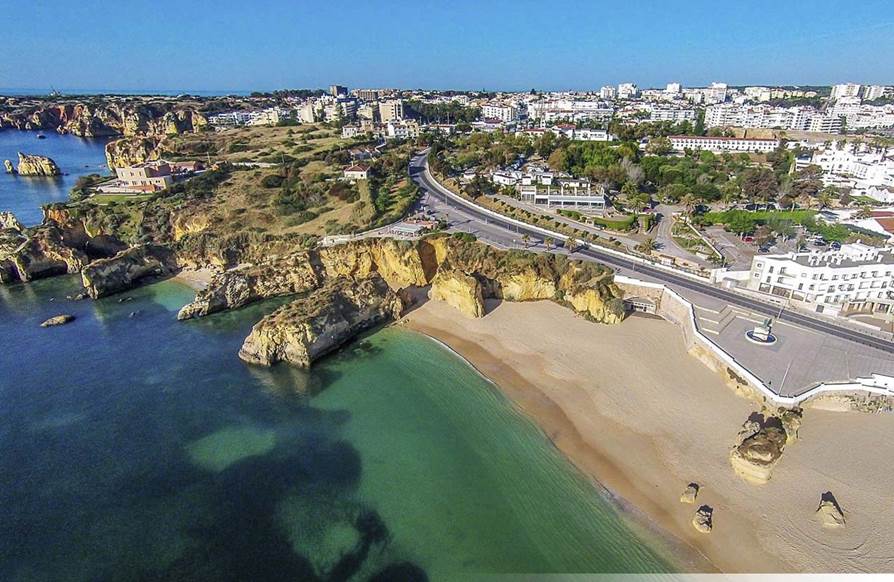
From the inspiring historic atmosphere you get while walking through the cobbled streets, to the exploration of the golden coast, a natural jagged headland with stunning beaches, Lagos is enchanting. If you are considering visiting the city, then this article is written for you.
Lagos, city of the sea, «ancient Portuguese window to the world», with more than 2000 years of history, is located in the extreme south of Portugal and is a place where after experiencing it you keep coming back.
1. GOLD COAST
Talking about Lagos without mentioning the golden coast is unthinkable. The perfectly jagged coast line which juts out into the Atlantic Ocean- from Batata, Estudantes, Pinhão, Dona Ana, Camilo, until Ponta da piedade, is more popular than ever before, and references in the international media has awoken the curiosity of tourists from all over the world.
Year after year, the beaches fill up with visitors and the guided grotto tours are in constant demand. Due to the increasing number of kayaks and fishing boats, mainly in the summertime, it’s typical to come across a flow of traffic in the sea, particularly near the caves.
Batata beach, originally named Formosa, is only metres away from the city centre and is the first beach after the river (on the west side). After Batata beach, you will find Estudantes, Pinhão, Dona Ana - once considered «the most beautiful beach in the world», where it’s also possible to take the grotto boat trip -, and then Camilo beach.
At the end of the golden coast line, where the headland is, there’s a lighthouse called Ponta da Piedade, the “mercy point”. So-called because, according to legend, when the men were departing from here, to the unknown, their women would remain on the cliffs, crying for them. It is here that you will also find one of the 28 lighthouses which can be found on mainland Portugal, which has a range of 15 nautical miles.
All these beaches are bordered by rocks and cliffs and the grottos also play a very important role along the coast. The grotto tours are possibly the top Nº1 most sought after activities in Lagos, and can take place in fishing boats, kayaks or stand up paddle boards. There are even those who simply grab snorkelling masks, jump into the water, and explore these idyllic beaches by themselves.
2. MUNICIPAL MARKET
At 7 am the doors open and the fish goes from the sea to the cold benches. The market traders distribute the different species of fish on the marble stands and get ready for another day of work. There is a bit of everything: sea bream, seabass, salmon, tuna fish, squids, sole, octopus, ray, hake. All freshly caught.
On the second floor of the market, the smell increases with a different kind of intensity. A variety of fruits, vegetables and legumes, jams, spices, nuts and seeds, as well as small souvenirs with a very “algarvian” touch are dotted through the stands, a reminder of the gastronomic and richness of the region.
After renovations the building was inaugurated in 1924, but it was only in 1950 that the ground floor became a fish market. Prior to that, it had always been a “fruit market”. Between 2002 and 2004, the public market space was refurbished. Although it was necessary to modernise the building and transform it into a space of hospitality, the spirit of traditional commerce remained alive. The ceramic tiles on the walls, which carry on up the staircase, characterise this modernisation adding expressions of colour, vivacity and lightness.
From the roof top there is a panoramic view of the Lagos marina, Meia Praia beach and the river. The last floor also has a lovely restaurant, the only one in the whole building, which has access to the Live Science Centre of Lagos.
3. SANTO ANTÓNIO CHURCH
Santo Antonio church, attached to the regional museum of Lagos, was built in 1707 and became part of the national heritage in 1924. This building reflects eighteenth century architecture, with Baroque style paintings, and it is all covered in gold, giving it the “must see” status.
The 1755 earthquake, followed by a seaquake, contributed to the destruction of Santo Antonio church, what brought the infantry regiment captain of Lagos, Hugo Beaty, to rebuild the monument. That’s why the only sepulchral tombstone contains its cadaver.
The entire church is crowned by a wooden vaulted ceiling. The ceiling is covered by amazingly coloured and intricately drawn printings, which one is the national coat of arms. Also, the polychrome statues of cherubs playing with animals and fishes are a delight to the eye and contrasts with the gilded around.
The gilded wood details and the typical local white and blue tiles highlights Santo Antonio church for its historical and architectonic unique beauty and helps confirming that «this church is one of the most beautiful churches of the country».
This monument, a Baroque-style inspiration, is part of the national patrimony since 1924.
4. LAGOS BAY
Meia Praia beach is a living element of beauty in Lagos. We are talking about a 4 kilometre stretch of a white, smooth sand running alongside the greenish blue of the Atlantic.
Meia Praia beach is a living element of beauty in Lagos. We are talking about a 4 kilometre stretch of a white, smooth sand running alongside the greenish blue of the Atlantic.
Along the beach there are many bars and restaurants and a variety of maritime-touristic activities with the beach merging into the city as an amazing setting.
This long beach curves around the edge of the bay all the way to the Alvor estuary. Legend states that, some time ago, people would come down from the mountain to the beach and choose anarea that would naturally divide the beach in half (Meia Praia means half beach).
Although the predominance of the north wind in the summer can be felt on the unprotected beach of Meia Praia, the feeling you get staring out to sea from the bay, with the city close by, being warmed by the sun, is unique.
5. DISCOVERIES AVENUE
Walking along the promenade you have the old city walls and Henry the Navigator square on one side, and on the other side, the stillness of the river. The avenida was built in 1960 and has a drawbridge that links the historic centre to the marina (to the east).
From the river mouth to the Dona Maria bridge (on the northern limit of the promenade), the floor is cobbled in a balanced combination of black, white and red stone, highlighting this original Portuguese technique.
The Avenida dos Descobrimentos was a proposal of the “New State” in celebration of the 500th anniversary of the death of Henry the Navigator (1460), and is one of the greatest attractions of Lagos. As you walk along the promenade, you can soak up the nostalgic atmosphere as well as the calming light of the river, on which the Boa Esperança is anchored, which is a replica XV and XVI century Portuguese caravel, the vessel which took part in the Portuguese Discoveries.
In order to walk to Meia Praia people tend to walk the promenade and then cross over at the bridge, bringing them to the east side of the city. This is why the avenida is such an important Lagos landmark.
6. SLAVE MARKET
The slave market is located in the Henry the Navigator square and was apparently the first one of its kind in Europe. The first slaves arrived in the city of Lagos directly from Mauritania, in 1444.
In 2010 it was converted into a slave market museum. This historic building, with «symmetric, rationalised, erudite architecture» and in February of 2014 it was classified as part of the Landmarks of Public Interest.
The first floor has been used not only as a customs house, but for the National Guard and as a military prison.
The slave market is a renaissance style building of great architectonical richness and its construction occurred in two distinct moments of the history: the first floor was built in the XV century, and was used to import the slaves; and the ground floor was built in the XVII century, and was used for the National Guard.
More recently this ancient building has been used as an art gallery. Although it is now closed for refurbishment it should open next April.
This symbolic building, located in one of the most attractive touristic points of Lagos, crystallizes a timeless chapter in the history of Portuguese maritime discoveries.
7. THE SEA AT YOUR TABLE
People from the Algarve soon get used to the smell of fish coming from neighbouring balconies, and they also know what it is to eat fresh, succulent and delicious fish.
People from Algarve (and people living in Algarve, of course) also know how pleasant is to eat a good fish stew and, a bean stew, a well stuffed stone crab; knows the taste of the lemon in the typical clams à Bulhão pato and the intensity of the scaled horse mackerel; knows the stuffed squid containing different kinds of sausages. And… how could someone forget about the slice of bread under the fat sardine? Never.
This gastronomic richness, together with other treasures from north to south, came up with the integration of Mediterranean diet in the Intangible Cultural Heritage of Humanity. Not only the food we eat in Algarve, but also the way of confectioning and eating, give tourists the curiosity to try the local experiencing, only if for one day.
Lagos started to be a fishing village, always linked to the sea and the fish markets. The city has also played a very important role with the fish cannery, especially in the first world war, which was a context where this way of preserving the fish would feed the soldiers in the trenches.
The feeling of proximity with the sea and earth, the local, healthy and sustainable products consumption, bring people from Algarve close to the table, the custom and the tradition.
8. SWEET ALGARVE
The traditional desserts/sweets of the Algarve are one of the biggest temptations in the Algarve and display the passage of Arabic influence in the south of Portugal.
In Lagos, the best experience is one where we start the day with the salt in our mouth, from swimming in the ocean, and end it with the sweet combination of almond, fig and carob.
Algarve tradition is corroborated in the saying «the sea dictates the table while the almond tree dictates the dessert».
The Algarve Gastronomic Sweet Heritage came up with the idea of the “Arte Doce” festival that took place, for the first time, in 1986, at the public auditorium in Lagos.
Carob Cake
The carob flour serves as a cocoa substitute, but has less in sugar and fat. One bite is enough to experience the pleasant and intense flavour, where the sweetness is well disguised in this delicious delight.
Marzipan Cakes
These little almond, sugar and egg delights, made into different shapes such as fishes, flowers and fruits, are delicious and represent the best of the Algarve. This sweet is made from a marzipan mix and is very similar to the well-known “Morgado”.
Morgado
“Morgado” or “Morgadinho” is another sweet temptation from the Algarve, made of almonds filled with a sweet egg yolk, or sweet pumpkin, mixture and covered with glacé. The final decoration is usually pearls of sugar and flowers made out of marzipan giving the illusion of an almond tree in flower.
Dom Rodrigo
The origin of this sweet comes from the convents and is made with the traditional sweet egg yolk, with a hint of almond and cinnamon. It’s wrapped in colourful metallic paper in the shape of pyramids. This delicious sweet of “fios de ovos” was one of the 70 Wonders of Portuguese Gastronomy in 2011.
Fig Cheese
This represents the Algarve at its best. So named because of its shape and texture. The main ingredient is fig, almonds, cinnamon, and sugar, sometimes, with a touch of the liquor “medronho”. It’s very intense and one of the most appreciated Algarve sweets.
9. NIGHT LIFE
Lagos is constantly sought by tourists from all around the world. The youngest generation is often attracted to the southerly destination of Portugal, where beaches are stunning, weather is pleasant, food is delicious and the night clubs and parties are a guarantee.
The Lagos vibe is contagious, especially in the summer when the streets are swarming and the street artists from all around are abundant, the cocktails are refreshing and the music beats to the rhythm of the spirit of the "Algarvians".
This historic city was once the core of the night life for the whole of the Algarve. Although tendencies have changed through the years, the festive spirit remains alive, and the fact that more young people from all over the World are searching out Lagos contributes to the diversity of the city’s identity.
There is a night life to suit all tastes: small and personalised bars; clubs and pubs; discos with local and international dj’s; live music; beach festivals; or the simple ritual of grabbing an ice cream in the town centre and having a stroll amongst the people and the street artists and then heading down to the promenade next to the river.
10. CULTURAL LAGOS
Lagos has never lost its historic and cultural identity despite its globalisation and tourism in mass. At the same time that street art was emerging within the main European cities it was also starting to emerge in Lagos.
In 2001, the Creative Art Lab (LAC) created the “Arturb” project (United Artists in Residence), which has been uniting artists from different places all around the world, to boost artistic creation throughout Lagos. The project has developed in two different ways: the annual artistic residence of LAC (located in the old prison of Lagos, where each cell corresponds to an artist’s space); and the Arturb in my wall, in which the artists’ paint the city walls. The idea is to take advantage of abandoned spaces around the town of Lagos and the result is an open sky exhibition, where the artistic signature of different personalities is unfolded.
In Lagos, you can also find the Cultural Centre, a multidisciplinary space with exhibitions, dance and theatre performances, shows, cultural animation and other kind of initiatives that help promote the cultural progress of Lagos. It has an auditorium that holds around 300 people and a temporary exhibition area, distributed over three rooms.
There’s also a cinema in Lagos, a regional museum as well as museum on the maritime discoveries, a municipal library, an Live Science Centre, an experimental theatre group and, although still in the development process, a co-work space, which consists of a collective work space which results in a synergy of people, areas, ideas and projects.

